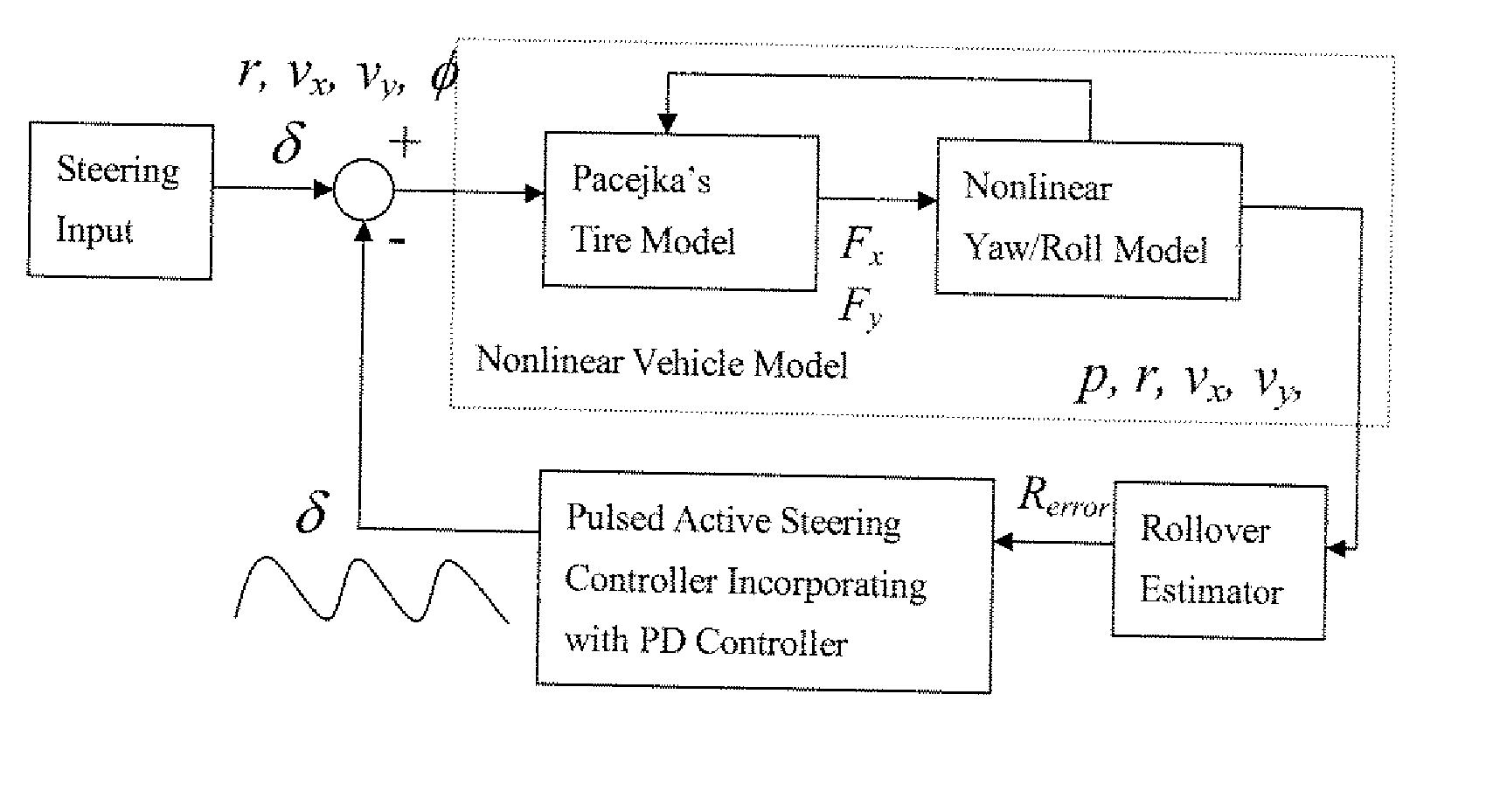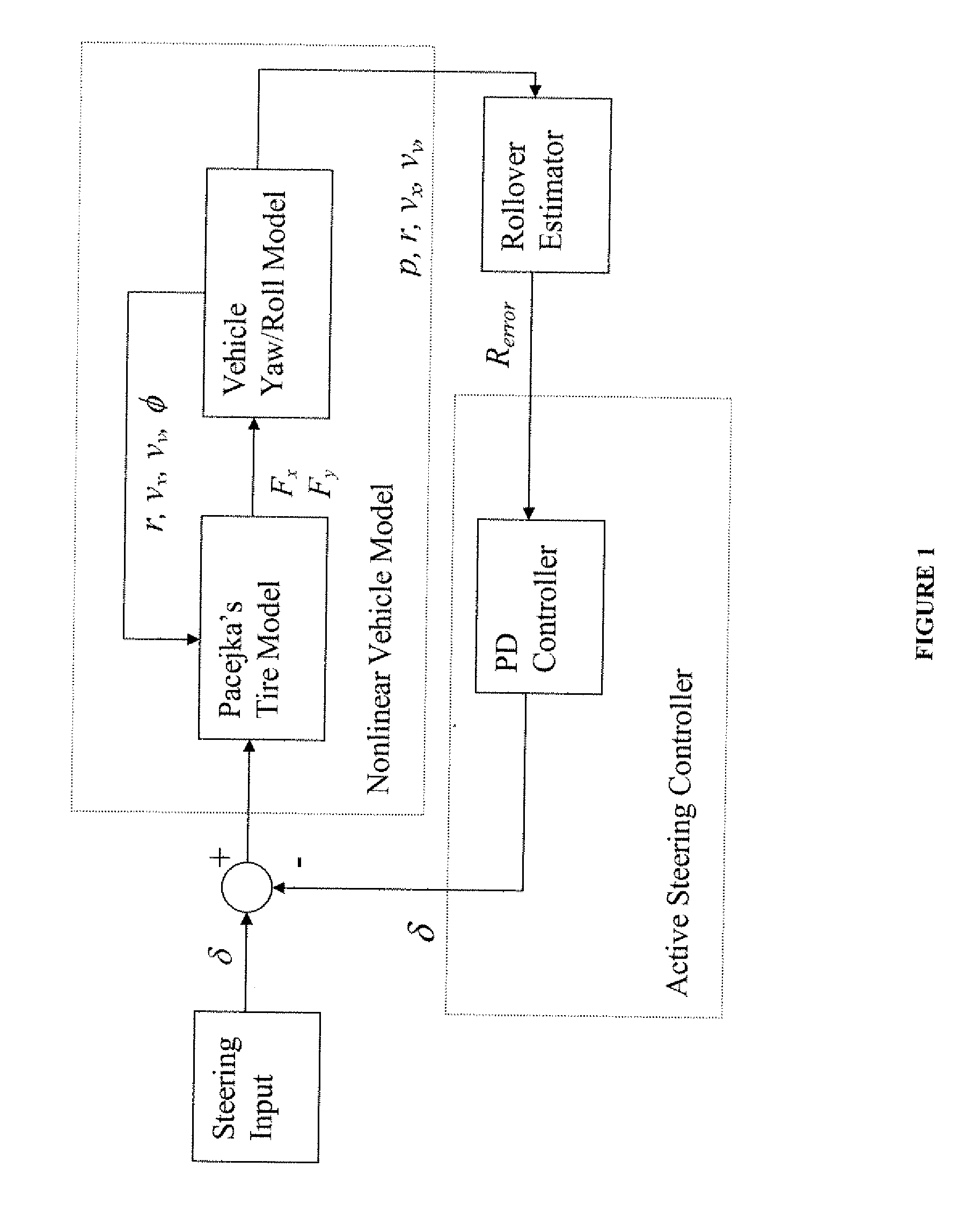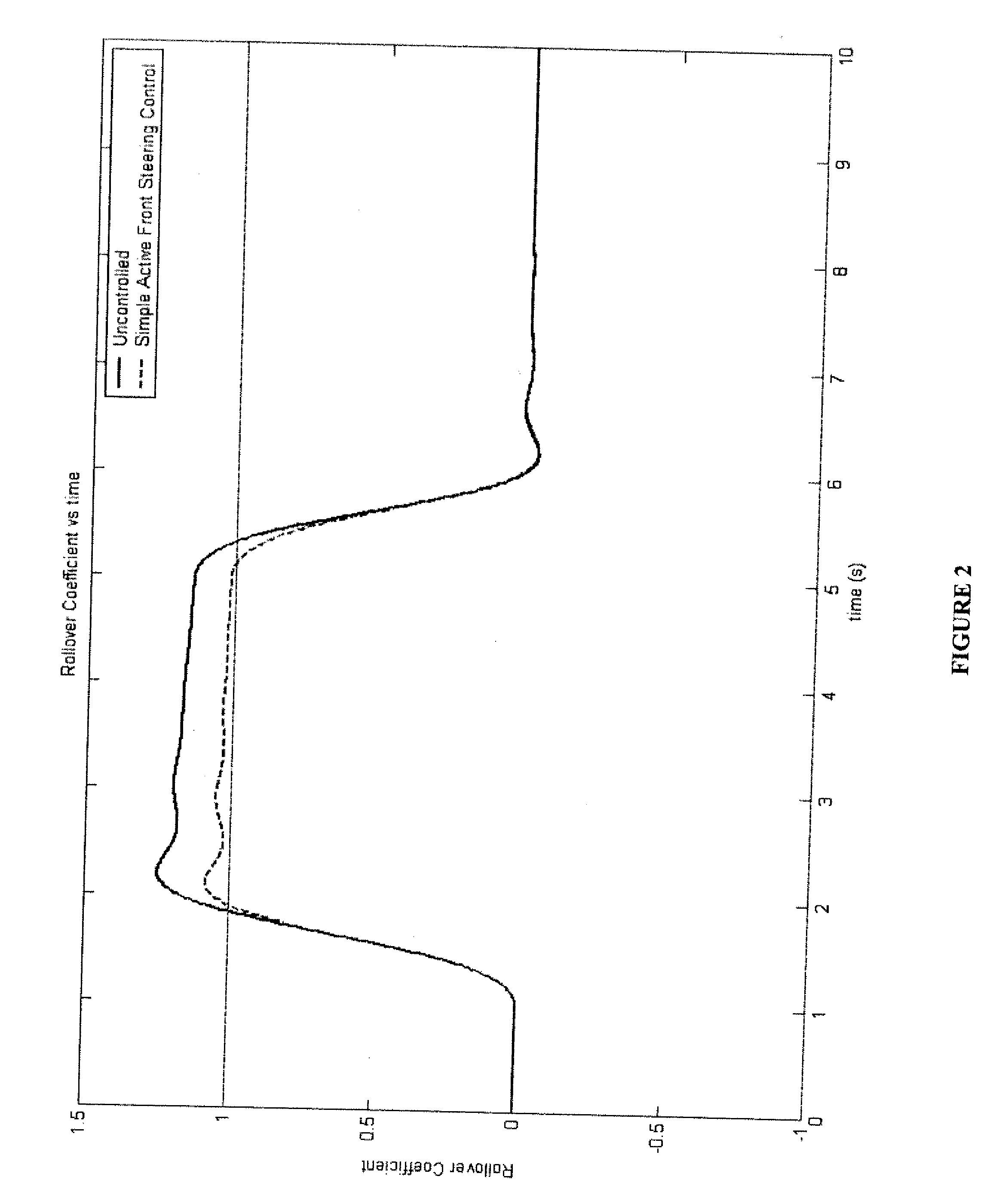Vehicle dynamic control using pulsed active steering strategy
a technology of active steering and vehicle dynamic control, which is applied in the direction of steering initiation, instruments, vessel construction, etc., can solve the problems of system instability, insufficient reduction of rollover coefficient to prevent the vehicle from rolling, and the efficiency of differential braking control methods can be greatly reduced, so as to and reduce the likelihood of rolling over of the motor vehicle
- Summary
- Abstract
- Description
- Claims
- Application Information
AI Technical Summary
Benefits of technology
Problems solved by technology
Method used
Image
Examples
Embodiment Construction
[0078] From FIG. 12, it can be seen that a rectangular pulse generally decreases the rollover coefficient, but there is a sudden increase in rollover coefficient near the end of the pulse. In a second test, a sinusoidal pulse is used. The total amount of rollover coefficient reduction is lower than with the rectangular pulse and the increase in the pulse near the end is also reduced compared to the rectangular pulse. In a third test, a special form of pulse is introduced with a sharp, gradually increasing edge and a smooth, damped, gradually decreasing pulse edge. As shown in equation 1.0, where a represents the time where the pulse reaches its peak and b and c represent the shape factor when the rising and falling edges respectively, the special shaped pulse can be easily reproduced. f(t)=ⅇ-(t-a)2bf(t)=ⅇ-(t-a)2c for 0≤t≤aa≤tEq. 1.0
[0079]FIG. 13 illustrates the overall structure of the proposed closed loop active steering controller for a rollover controller. The nonlinear v...
PUM
 Login to View More
Login to View More Abstract
Description
Claims
Application Information
 Login to View More
Login to View More - R&D
- Intellectual Property
- Life Sciences
- Materials
- Tech Scout
- Unparalleled Data Quality
- Higher Quality Content
- 60% Fewer Hallucinations
Browse by: Latest US Patents, China's latest patents, Technical Efficacy Thesaurus, Application Domain, Technology Topic, Popular Technical Reports.
© 2025 PatSnap. All rights reserved.Legal|Privacy policy|Modern Slavery Act Transparency Statement|Sitemap|About US| Contact US: help@patsnap.com



